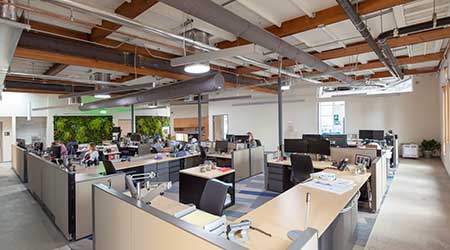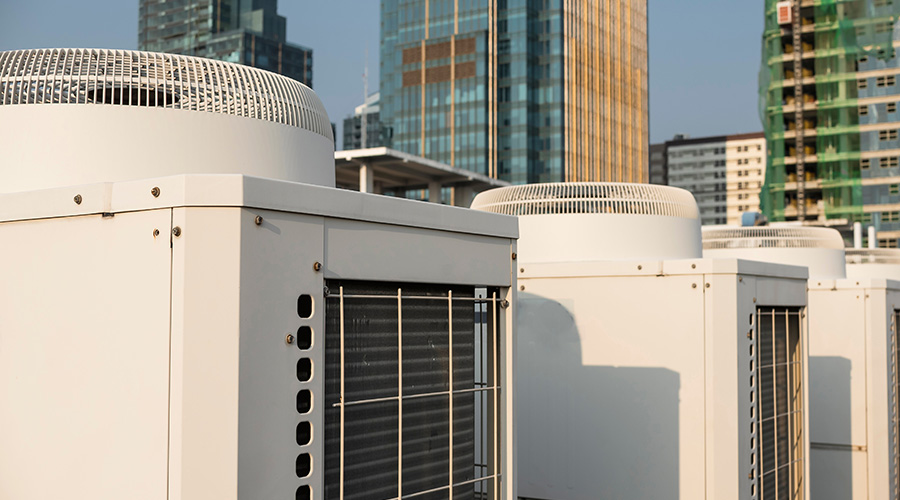 Architectural Nexus
Architectural NexusLEED and WELL: Complementary, Not Contradictory
Understanding how LEED and WELL align is key to delivering cost-effective, successful sustainable and healthy building projects.
Today, many buildings are “good,” but not “well.”
Since the 1990s, a good building has had minimum floor-to-floor dimensions while optimizing ceiling heights; perhaps the duct loop goes through the girders.
In a good building, the rentable area is important, with the deck edge and glass line positioned for maximum square footage. The cores are as small as possible, but with gracious circulation and upscale restrooms. Enhancements, such as high-end lighting, grand lobby art, or faster elevators are carefully weighed against the cost, tenant perception, and projected lease rates.
LEED, launched in the early 2000s, redefined what makes a building “good.” Many developers embraced LEED to enhance marketability. In return, they captured modestly higher lease rates while reducing operating costs, each with clear financial benefits. The fact that LEED buildings are less bad for the planet than their non-LEED counterparts is an added bonus.
It may not be surprising to learn that architects have often been charged with figuring out how to achieve LEED certification (at a specified level per market demands) as inexpensively and easily as possible. Project teams may specify a white roof instead of a black roof to get a free LEED point but not pursue the daylighting credit because that would mean changing the orientation and aspect ratio of the building.
Project teams talk about how much credits cost rather than what they are meant to do for the environment. The trend today is that many buildings are “designed to LEED standards” but without the benefit of the LEED tracking and accountability process.
While industry leaders can debate whether the commercial real estate market has fully embraced green design for the benefit of the planet, few would disagree that LEED has radically changed the conversation about sustainable and socially conscious architecture, and that buildings perform significantly better than they did 10 or 15 years ago. Common improvements include superior low-e glass, code-mandated continuous insulation, well-detailed weather barriers, enhanced envelope testing, and many other improvements to how buildings are designed, commissioned and operated. The result is that newer buildings are more energy efficient and the EUI (Energy Use Index) of the average office building has gone from 47.7 in 2007 to 31.8 in 2016, a 33 percent improvement.
LEED and WELL case studies
The World Green Building Council’s publication Building the Business Case: Health, Wellbeing and Productivity in Green Offices cites both WELL and LEED case studies with impressive outcomes.
One such case study is Saint-Gobain’s North American headquarters that is a 277,000 square foot LEED Platinum building that houses more than 800 employees and incorporates many design features that promote occupant health and wellbeing.
The new facility features a 25 percent increase in daylighting over the former offices and 92 percent of offices have views to the outdoors. It includes a wide variety of collaborative spaces, a cafeteria serving locally grown food, a fitness center, pond, outdoor work spaces, and 1.3 miles of walking trails. The impact of moving into the new building produced a 97 percent increase in average weekly sales-generated leads and a 101 percent increase in average weekly number of leads per call.
Another study cited in the WGBC publication was commissioned by the Canada Green Building Council. The study noted that the top three benefits cited by 30 percent of healthy building owners include increasing building value (38 percent), the ability to lease space more quickly (46 percent) and the ability to charge premium rent (28 percent).
The WELL Building Standard is revolutionizing how we think about office buildings, operations, and behaviors, and how all of these aspects affect the inhabitants of the building.
Science will continue to prove that office environments can improve the nutrition, fitness, mood, sleep patterns, and performance of its occupants, naturally leading to the adoption of the WELL Building Standard as it enhances the “true” ROI of office development: Office environments that attract and retain employees, clients, and investors, while maximizing performance of employees by contributing to increased productivity, reduced absences, and increased job satisfaction and engagement.
Julie Berreth (jberreth@archnexus.com) is principal architect at Architectural Nexus.
Related Topics:













